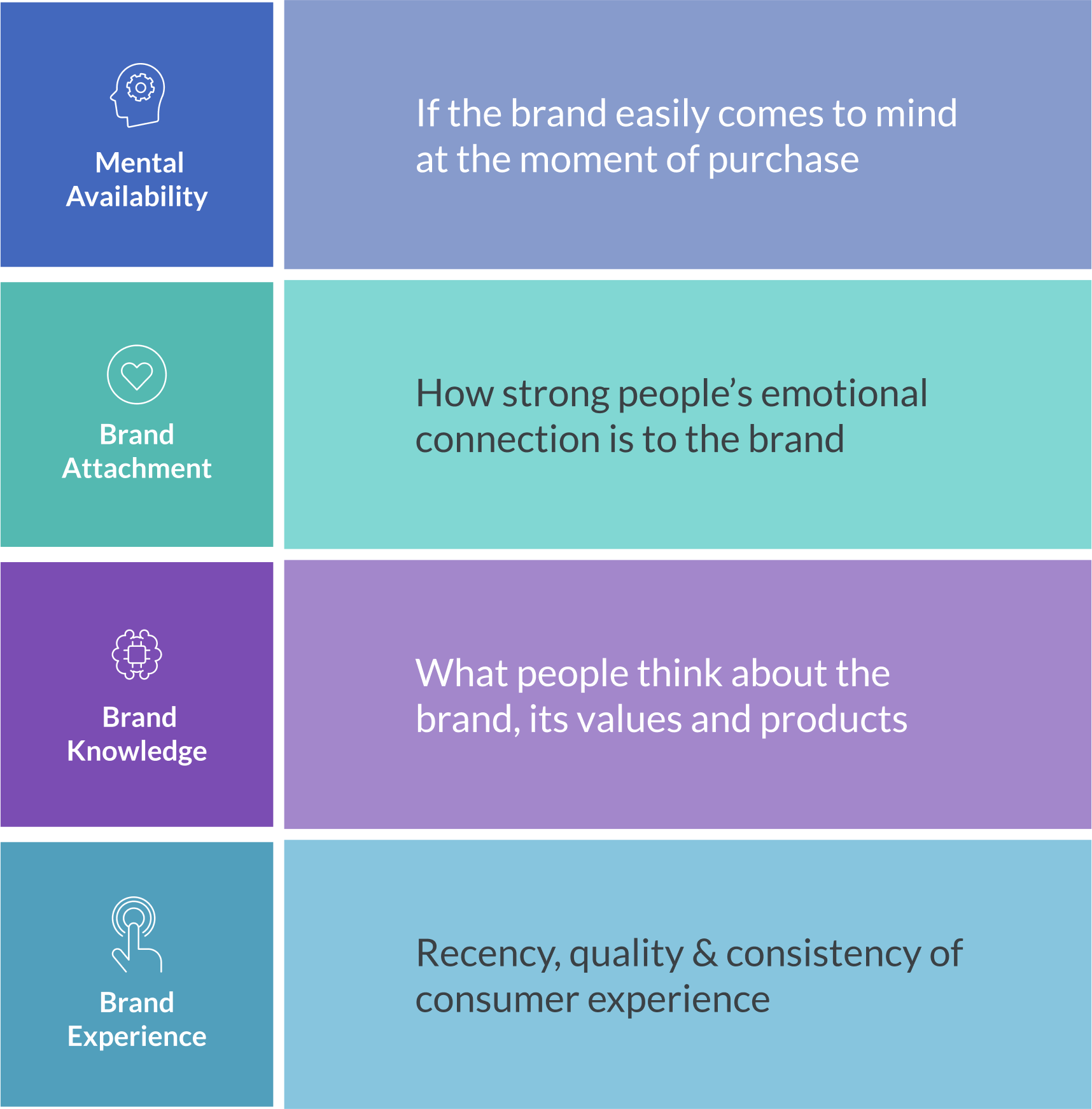As a brand, your success depends on two key factors: the number of products or services you sell and the price at which you sell them. But how do you measure the strength of your brand in these areas?
At GfK, we use our Brand Architect approach to evaluate a brand’s ability to sell a high volume of products and sell them at a premium price. By utilizing our Brand Choice Score and Brand Premium Score, we can provide an overall measure of brand strength that helps our clients grow. However, it’s important to note that different types of brands may prioritize one of these factors over the other, but the strongest brands excel at both. So, how can you improve your brand strength? Let’s take a closer look.
To truly strengthen your brand, it’s important to first identify which brand classification it falls into. At GfK, we categorize brands based on their Brand Choice and Brand Premium Scores into four distinct groups: smaller brands, mainstream brands, exclusive brands, and power brands.

Smaller brands may struggle with mass appeal and may not be able to charge a high price premium. On the other hand, mainstream brands may be widely appealing but may not be able to command a high price point. Exclusive brands have the ability to charge a high price premium but are only appealing to a small niche audience. Finally, power brands are the most successful brands that appeal to a broad audience and command high prices.
Maintaining market share with price elasticity
Developing a strong brand strategy and increasing revenue begins with understanding your brand classification. There are different factors to consider depending on whether the goal is to increase volume or premium. At GfK, we have discovered that price elasticity plays a key role in determining a brand’s ability to command a premium price.
In fact, exclusive and power brands have been found to have elasticity scores that are less than half of the price elasticities of smaller and mainstream brands. This means that their brand is impacted far less by price changes compared to smaller or mainstream brands. If you intend to increase prices while maintaining market share, reducing customer price sensitivity should be your top priority. The level of customer loyalty is directly linked to price elasticity. Customers frequently opt for smaller or mainstream brands due to their lower prices.
However, if smaller and mainstream brands increase their prices, their risk of losing customers is much higher compared to exclusive and power brands. Reducing price elasticity is therefore essential to improve loyalty, not only for exclusive and power brands but for all brands, as it is a key driver for revenue continuity. By understanding the impact that price changes have on choice, brands can take proactive steps to strengthen their brand and maintain market share.
Enhancing brand perceptions to drive revenue
GfK has identified 4 brand strength pillars that help detail ‘WHY’ brands are strong or weak.

Mental availability refers to the ease with which a brand comes to mind when a consumer thinks about buying a product within a specific category. In this measure, power and exclusive brands tend to perform better than others, which is also reflected in their brand experience and emotional attachment to the brand. This superior performance justifies the higher price point to consumers.
GfK offers a brand knowledge metric that helps brands understand how they are perceived by consumers. Power and exclusive brands have positive perceptions that go beyond merely meeting the core category need, which allows them to charge a higher price.
Smaller brands are affordably priced and relevant to the market, much like mainstream brands, but they enjoy higher levels of trust from consumers. Exclusive brands, while being reliable and trustworthy, are also desirable, and therefore justifiably expensive. Power brands are characterized by their innovation, modernity, and endorsement, which contribute to their broad appeal.
Strategies for increasing brand awareness and appeal
Knowing how mental availability and brand perception can impact consumer behavior is valuable for businesses looking to strengthen their own brand. Whether they want to enhance brand choice or increase the likelihood of buying at a premium, businesses could implement the following strategies to help increase brand awareness and appeal.
Increase brand exposure: One of the most effective ways to improve mental availability is to increase brand exposure through advertising, social media, and other marketing efforts. Consistently showing up in front of the target audience will increase the likelihood that they will think of the brand when making a purchase decision.
Leverage endorsements and partnerships: Partnering with influencers, celebrities, or other brands can lend credibility and endorsement to a brand. These partnerships will help increase appeal to consumers and make brands aligned with market trends.
Some, particularly smaller and exclusive brands, they can choose to improve their strength by focusing on drivers that help enhance their Brand Choice. Leveraging the following tactics that build both trust and affordability will help develop characteristics more aligned with mainstream and power brands.
Build brand trust: Building trust through transparency, reliability, and ethical business practices can help improve brand perception. This can be achieved through product quality, customer service, and being active in the community.
Balance need and affordability: Consistently meeting core needs at an affordable price is essential to many consumers. Being able to offer this trusted and affordable option will help the brand establish mass appeal increasing its ability to be chosen.
Other brands may choose to improve their strength by focusing on themes that help increase their brand premium. In general, consumers are willing to pay more for brands that are unique and offer additional benefits. However, the definition of uniqueness can vary by consumer forcing businesses to explore brand strategies that either deliver certain product characteristics or focus on enhancing emotional attachment.
Differentiate the brand: Creating a unique brand personality or positioning that sets the brand apart from competitors can help improve brand perception. This could be done through product design, brand messaging, or even a unique brand voice.
Deliver excellence: Providing the best quality product/service and consistently delivering on the brand promise can create a positive brand experience for consumers. Perception of being an expert in the category will help achieve greater brand attachment and increased loyalty.
By incorporating these strategies, businesses can improve their mental availability, and brand perception, and ultimately drive sales and revenue growth.
Our innovative people and culture mean GfK has been able to develop a brand tracker that measures premium brands, something most brand trackers fail at. Our solution stems from our commitment to fostering greatness in an inclusive environment – we consistently strive for quality and have the resources for our employees to create leading solutions. Want to be part of a team that creates industry-leading solutions? We are always looking for great people to join and become part of our innovative teams.
Find out more about GfK Brand Architect to develop successful brand strategies that connect with your consumers, increase your brand strength, and deliver remarkable brand experiences.
![]()




